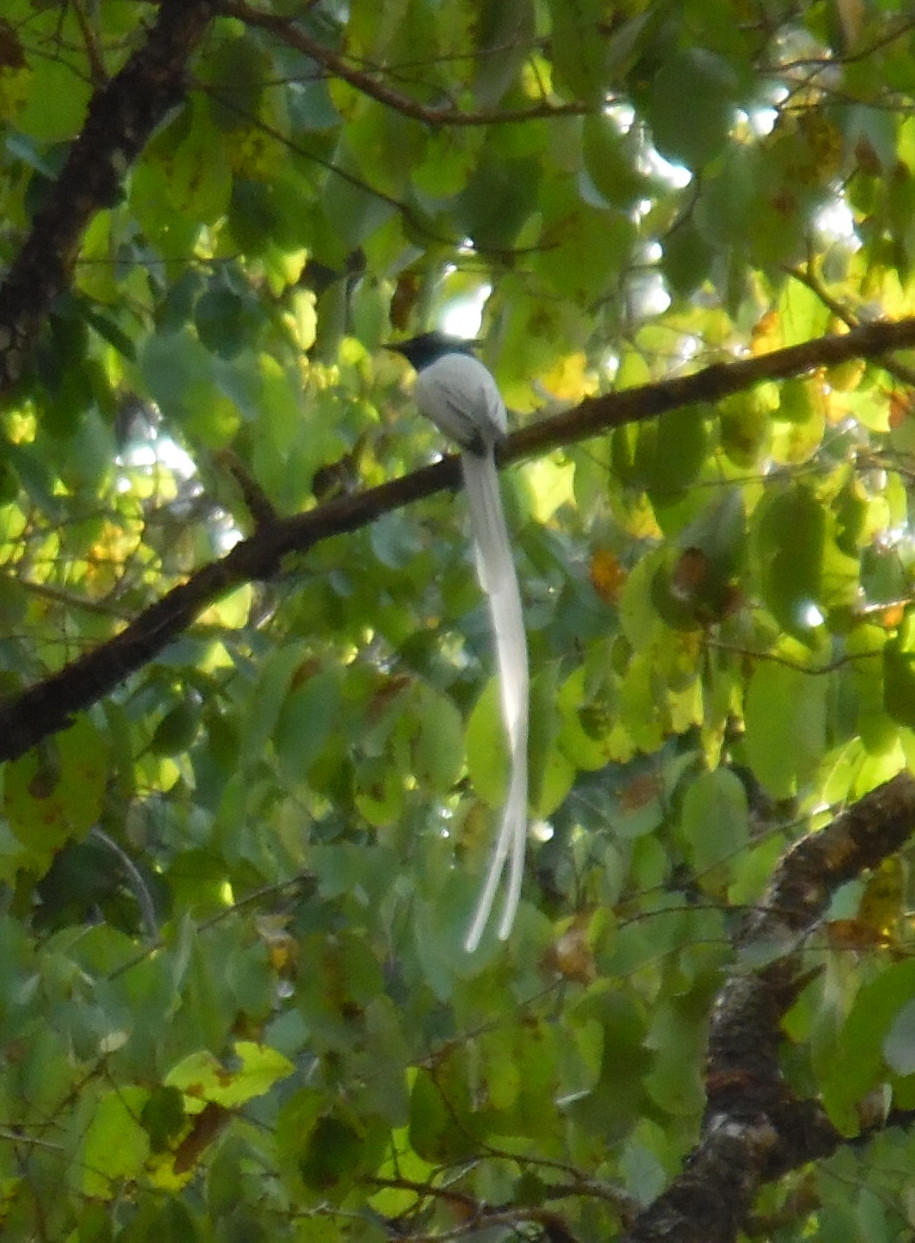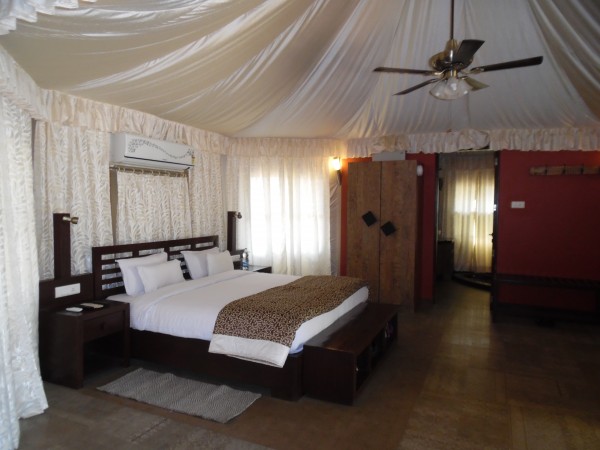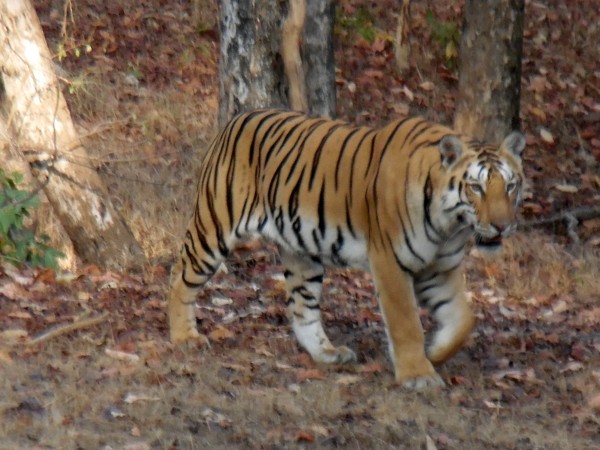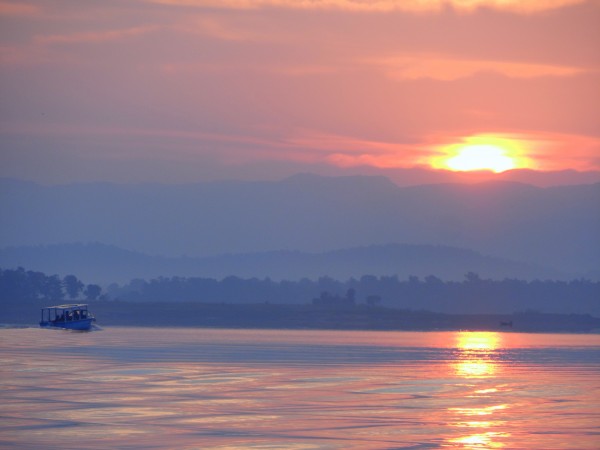We spent the holidays in Mumbai at two very beautiful luxury five star hotels and then on the 2nd of January we flew off to Nagpur to start a ten day journey through Madhya Pradesh. ‘MP’ as it is known is famed for being the location for the great ever young story The Jungle Book by Rudyard Kipling and I grew up on those stories as a young child in India and was familiar with the various characters that are of course animals…that is apart from Mowgli the child in the forest brought up by wolves!
It is a couple of hours drive from Nagpur, which is actually in the adjacent state of Maharashtra, to Pench National Park. I had previously visited Bandhavgarh, Kanha, and Panna National Parks which are also in MP but never Pench so I was eagerly anticipating this visit. We were guests at a very new resort called Tathastu. I use the word resort carefully because it is designed as a resort with several facilities that a wildlife lodge would not readily have.
The owners, however, are very keen on responsible tourism and have planted hundreds of trees and bushes and an Ayurvedic Garden and their own organic vegetable garden. They have luxury tents, a couple of ‘constructed caves’….with all mod cons and a couple of tree houses. Along with those there are luxury villas for bigger family parties and those who might attend conferences here. Yes, they have built a completely sound proof conference hall and a lovely indoor heated swimming pool and there is a Spa being constructed too. So yes it is a resort and with the aim of hosting small conferences of executives and others who seek special places in which their staff can be trained and achieve team spirit…or just relax. If all those who come also learn to appreciate and respect and love the Wild Places of India…in this case Pench then I am happy too…..I write as a child of India myself.
Just to remind the reader about the central characters of The Jungle Book….the Walt Disney film was first released in 1967 but is now having a digital remake of that animated classic which will be in cinemas on 15th April. The essential story was that of abandoned village toddler found and raised by a pack of wolves. The story you may recall involves mischievous monkeys – the Bandar-log, the friendly Bear Balu, the enemy is the savage tiger Sher Khan, Mowgli’s great support the Black Panther (leopard) Bagheera. The mother wolf is Akela (which means in Hindi the lone one) the slimy character of Tabaqui the Jackal, the wondrous Hathi – the Elephants and Kaa the Python and other characters.
Sher Khan was seen as the baddie when Kipling wrote the book way back in 1894; but now in India Tigers are most precious and whereas when I was born in India nearly 70 years ago there were 40,000 tigers there are now only about 2,500 in the whole sub-continent. Tigers if left to themselves breed easily and are truly magnificent kings and queens of the food chain and the most beautiful of the big cats. So, whether people admit to it or not most wildlife tourists are mad keen to see tigers and leopards if possible, plus sloth bears plus all the other lovely creatures of the Indian jungles. The great danger to Tigers is poaching which is fuelled by the unwise (I mean stupid) mythology of their body parts having aphrodisiac qualities for Orientals like the Chinese and Vietnamese. Poaching has decimated tigers for decades now and that great danger extends to the Asian Elephants and the Rhinos in India.
Indeed HRH Prince William is doing all he can to give global prominence to the poaching threat to all three creatures and will be visiting India in April. As if The Jungle Book being re-released was not enough I can tell you that there is a most wonderful Children’s book just published called Global Gang and the Land of the Tiger which has a most exciting story which is all to do with poaching and I also recommend that for young readers. I gave it to my grandchildren at Christmas.
On our first safari the first afternoon we came across a pair of Paradise Flycatchers which was astonishing and a delight. We saw chital deer, sambar deer, owls, wild boar, jungle fowl, gaur, mongoose in all the forest and glades and water holes, some peacocks and other birdlife….but the tiger remained elusive. We had three drives, one at crack of dawn the next day and another in the afternoon but no – the tigers of Pench were having the week-end off. Then it was suggested that if we would go out on Monday morning it could be arranged. We did.
Immediately that morning the park somehow felt different and there was a sort of buzz and expectation and then it started….the roaring, it got louder and was continuous. One tiger venting his frustration or communicating, then a second joined in. It was so thrilling and the Naturalist was considering where to take us in the jeep – I had never heard tigers roar like that in the wild, it has a curious exciting sound that thrills and threatens. They decided these were two male tigers who were part of a trio of three cubs, now grown and they were communicating with their other more dominant brother.
I held on for dear life as the jeep was swung into action and we sped up to where we felt was closest to the roaring. Then….suddenly there was a tiger cautiously appearing out of the lantana undergrowth…..we held our breath, would he come near us or just slink away, but No! He kept coming out and lo and behold he was followed by his brother. Well that was astounding as adult male tigers do not normally remain together. We were filming away and just enjoying the moment. These magnificent tigers came out to within 25 feet of us and walked together slowly and then crossed the road in front of the lead jeep, we were one behind and then paused on the other side and looked at us. It was mesmerising. Truly beautiful.
Thankfully both our cameras did us proud and we treasure that visual memory as well as the photographs. Tigers of India, Tigers of Pench, thank you!
We left with promises to return soon and had a long drive ahead and were only too glad when eventually we arrived at Reni Pani which is on the periphery of Satpura Tiger Park. This too I had never as yet visited despite invitations from five years ago. Reni Pani is a delight, a carefully well maintained small set up and Graham and I were in our element. The viewing veranda of our little house almost immediately gave us a view of a chital hind and her faun, a racket tailed Drongo bird and then a little later a pair of Golden Oriels….that was as outstanding as the Paradise Flycatchers for me.
That evening we went in the jeep on a safari to see small creatures in the buffer zone. We were so fortunate and saw plenty of small jungle cats, rusty spotted cat, civet cat and hares but I could not really take good photography in the dark with headlights. It was an interesting experience followed by a good meal and then a comfortable bed. Reni Pani is kept as close to nature as they can but it does have a lovely pool and a library and good food and service.
The next morning we were up before the sunrise to go on the lake and we both loved this. The sunrise was spectacular and the birdlife rich and varied. We breakfasted on a flat rock having landed from the motor boat. The Satpuras are ‘seven hills’ and the range is very beautiful. This park is not known particularly for tigers but is famous for Sloth Bears and Leopards. That afternoon after a glorious shower and rest just enjoying the Lodge and its grounds we again set off in the jeep, passing the various villages until we arrived at the lake/dam where we boarded the launch for entry to the main Park.
It is a beautiful place and in no time we saw the pug marks of a tiger and there was much expectation but it was not realised. However, the big plus was the long sighting of a mother Sloth Bear and her two cubs. They foraged around in an ant hill for about half an hour so we had plenty of time to enjoy the sighting. There was bird life and then wonderful close range of Gaur, the biggest bovine in the world. They are mighty creatures, but are not bison…they are usually quite shy so it was lovely to get close to quite a group of them.
Sadly we had to depart the next morning whereas I would have loved to stay for another night at least.
We are all Custodians of our great wild places, be they in India, Great Britain, Europe, North America, South America, China or Australasia, Malaysia and Indonesia and indeed Russia. When one has a wonderful wildlife experience there is a sense of great enrichment….we need to all feel like that and do our utmost to help conservation keep these wonderful animals safe from the predation of greedy humans.
Aline Dobbie is an author of four books on India and a travel writer. She lives in Scotland but travels widely throughout the year with an annual visit to India where she was born & grew up. Aline’s earlier life was in the corporate world but now lives a rural life with emphasis on travel, gardening, cooking, and family. India, South Africa, England, Scotland, Greece and other lovely places are a constant delight to her.














